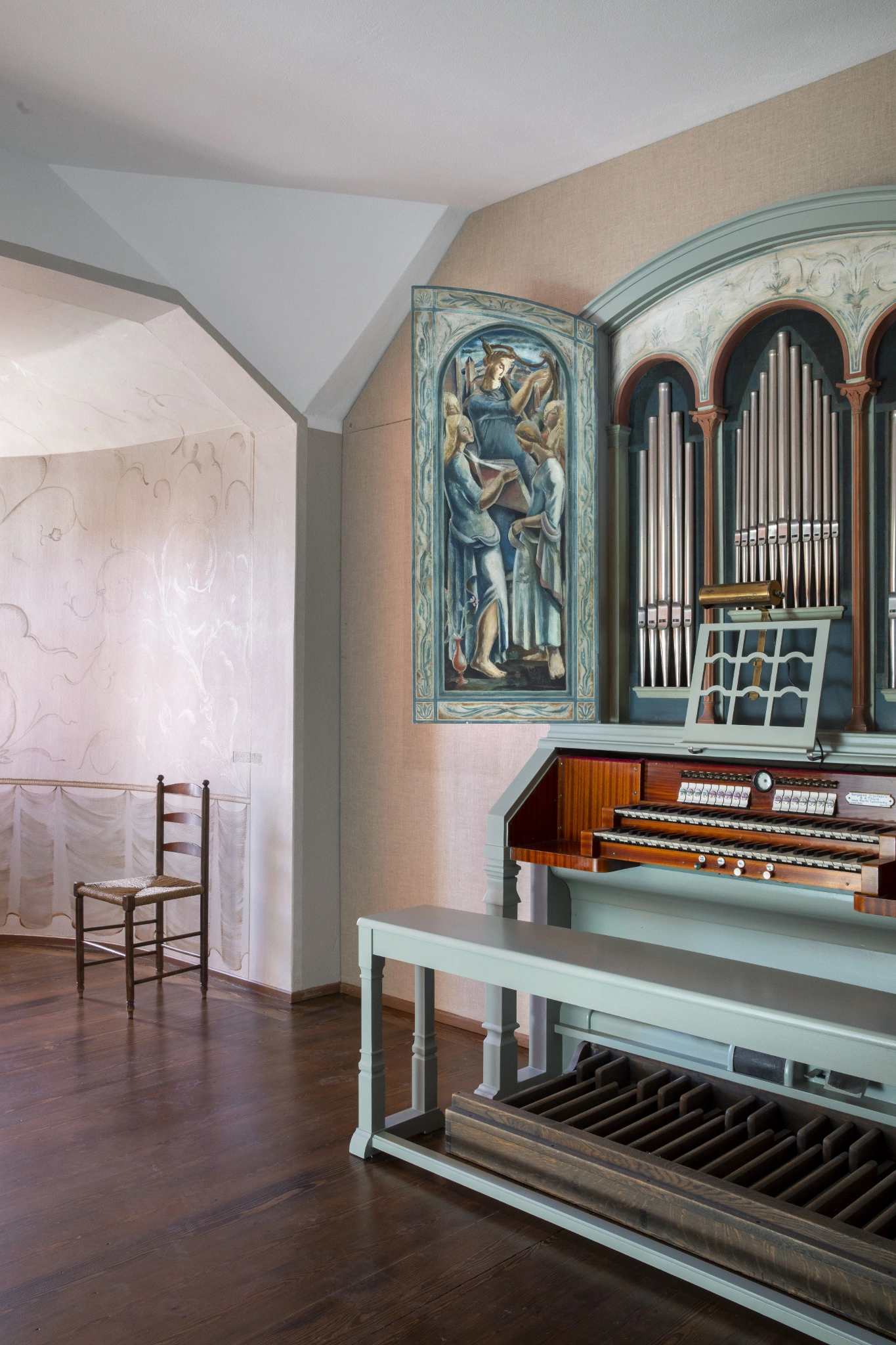
Organ Room

Organ Room
Amos Anderson’s interest in church music began as a child in Kimito. A harmonium from his childhood home is preserved at his former summer residence, now the Söderlångvik museum. In his youth, he reportedly dreamed of becoming a cantor, but his life took a different path. However, his interest in music remained. He was the long-time chair of the Svenska oratorieföreningen (the Swedish Oratory Association) and supported choral singing in many ways.
He built a handsome organ in the chapel’s side room, which was completed in time for the consecration of the chapel floor in 1926. Director musices John Sundberg designed the layout of the organ, which was constructed by the Kangasala Organ Factory, owned by Martti Tulenheimo. The wood for the organ was from Anderson’s own sawmill. The elaborate, music-related, angel-themed decorative paintings on the organ’s façade were by the artist Henry Ericsson. Concerts were held on the most festive occasions.
The organ’s mechanism was pneumatic, with seven independent stops and one transmission. In 1938, changes were made to the organ, as a result of which its sound changed from a dark, romantic and basic tone to a brighter neoclassical one. The organ was retuned in 1965 when the museum opened. The dilapidated instrument, which was rarely used, was thoroughly restored in 2009. Similar rare instruments have been found in private homes, for example, in Gallen-Kallela’s Kalela wilderness studio in Ruovesi and in Emil Wikström’s artist home at Visavuori in Sääksmäki.
In the organ room’s window recess, there was originally a Medieval-styled wall painting with a vine motif, which was later covered over. The painting has now been restored to its former state, based on surviving photographs.

